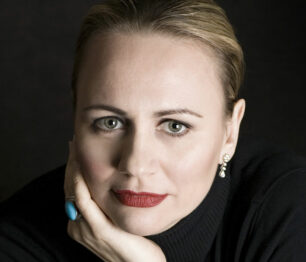In August 1857, Richard Wagner placed a concluding double barline in the second act of Siegfried… and immediately abandoned his future Tetralogy to begin writing a score central to his career: Tristan and Isolde. This new opera was inspired by his recent discovery of Schopenhauer’s philosophy and his growing attraction to Mathilde Wesendonck, the wife of his patron and neighbour in Zurich. This impossible love forced the composer – then himself married to Minna – to leave Switzerland and settle alone in Venice, where, in March 1859, he completed the second act of his work. Coincidentally or not, this act, conceived during his solitary exile, contains one of the greatest love duets in the history of music: Tristan and Isolde meet in secret, unveil and feel out their buried feelings, in a long nocturnal scene that was to influence many artists in the coming generations – starting with Arnold Schoenberg for his Transfigured Night.
This second act is much more than a declaration of love and a great moment of lyricism. Wagner himself knew that it was a fundamental score for his blossoming musical personality. This is when he honed his style, skillfully building the most delicate transitions between the most contrasting moods, as he explained a few months later, in October 1859, in a letter to Mathilde Wesendonck: “My greatest masterpiece in the subtle art of transition is certainly the great scene from the second act of Tristan and Isolde. The beginning of this scene presents the overflowing life in its most violent passions, the end, the most solemn and profound desire for death. These are the pillars: now see, my child, how I linked them, how this desire moves from one to the other! Such is the mystery of my musical form.” Many years later, Pierre Boulez would confirm: “Wagner’s great strength was to invent continuity in opera, and this is a great innovation”, he confided to Michel Archimbaud.
In this act, the importance of transition is expressed through a beautiful symbol, when Isolde invites Tristan to consider the word “and” in “Tristan and Isolde”. The most important innovations, however, are to be found beneath the words: the orchestra takes a more active part in the drama than ever before, by way of an ancient chorus without words. The omniscient instruments express, stir, confront, whisper and sometimes howl the feelings and situations that the protagonists are groping for. Wagner gives certain instruments (woodwinds, harp, viola, etc.) the status of real characters, repeats and combines meaningful leitmotifs, systematically uses chromaticism to glide from one motif to another, from one phrase to another, weaving an organic musical thread which only breaks upon exceptional events – such as the second act ending with the hero’s death.
If Tristan is inextricably linked to the idyll between Wagner and Mathilde Wesendonck, Mahler’s Symphony No.10 is associated with the serious crisis facing the Gustav-Alma couple in the summer of 1910. Traces of this can even be found in the manuscript of the work: “Annihilate me, that I may forget that I exist, that I may cease to exist”, “May I live for you! And die for you, Almschi!” In the score of the finale, this nickname for Alma is accompanied by a sudden burst, like a cry from the violins. This last movement remains a sketch. Only the long Adagio, which serves as the first movement, was completed by the composer before his death the following year.
This page, which lasts almost half an hour, is a condensed version of Mahler’s style, in line with Wagnerian innovations. It opens with a tortuous recitative by the violas that sounds like a distant echo of Tristan, before a warm theme with wide, hyper-expressive intervals unfolds its melancholy song. As is often the case with Mahler, irony is never far away, clearly perceptible in a grating third idea, accompanied by a bouncy motif. Can these three elements be reconciled? Their systematic juxtaposition seems to suggest not, until a violent dissonant chord – the work’s only tutti fortissimo – seems to act as a revelation: from then on, the different ideas blend together towards an appeased conclusion.
Pierre Boulez conducted this Adagio on numerous occasions, including the opening concert at the Cité de la Musique in Paris on 12 January, 1995, with the Orchestre du Conservatoire. Mahler’s music fascinated him in more ways than one: for example, it sharpened his understanding of the works of the Second Viennese School; he also confessed to finding similarities between Mahler’s writing and his own preoccupations as a composer, notably in the way he tried to “constantly obtain different perceptions of the same musical material”. Indeed, this Adagio could be heard as a vast kaleidoscope of complementary and irreducible facets. Doesn’t it sound, then, as an excellent mirror of Boulez’s multiple personality?
Tristan Labouret









